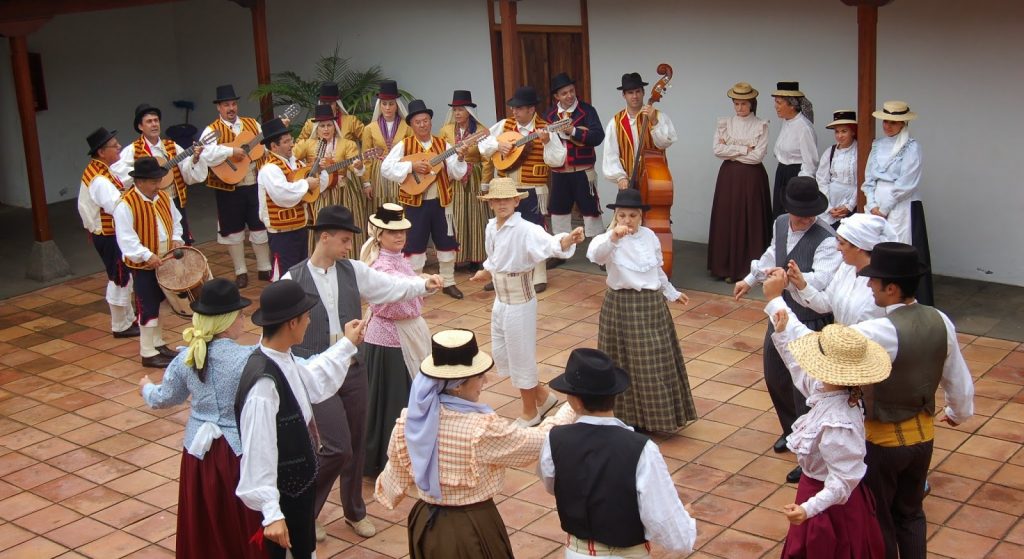Canarian folk music is the result of a mixture of musical styles of the indigenous people, the conquerors of the Canary Islands from the Iberian Peninsula, but also of the Caribbean, brought by those who migrated back to the Canary Islands.
The diverse Canarian music of the archipelago is the result of the first fusion of cultures and was then expanded with the influence of European traders (Genoese, Jews, Flemish, British) and flows of people between the Canary Islands and the New World.
Canarian folk music
The folklore of the island is well described in a quote by Pedro Hernández-Guanir:
"Like a tree, he takes root in the world of the Guanches. Its trunk is the result of various foreign influences [...]. However, the branches are a product of the temperament and psychology of the Canarian people. They have managed to give it an original, rhythmic, cheerful, humorous and melancholy touch... just like their own personality. The final result of this folklore is ultimately different from the one that gave birth to it. It is like the tree, [...] different from the seed that gave birth to it."
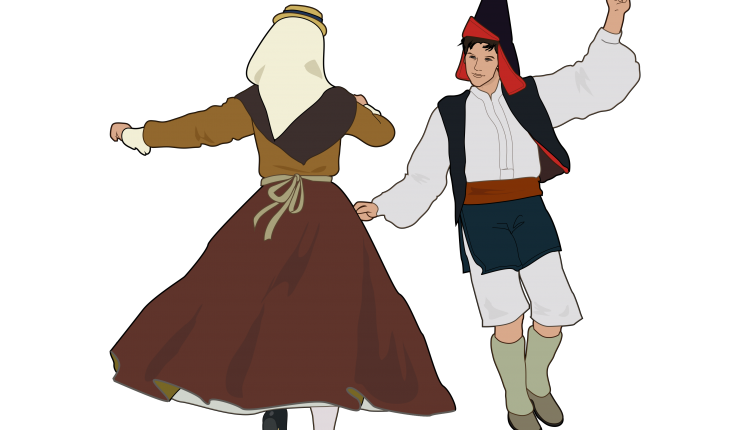
Instruments of the Canarian folk music
Both, the history and the geographical position of the archipelago have, over time, allowed external influences to reach the islands. It is therefore easy to understand why musical instruments are used from outside the archipelago. The classification of instruments used in Canarian music is the following one:
Aerophones
- Accordion
- Mussel shells: Natural horn, which is made by cutting the opposite end - where the lips are located - of the opening of a shell. It was also used to send signals.
- Flute from La Palma: made from sugar cane and exclusively from La Palma. It has six holes and its mouthpiece is similar to that of a recorder.
- Different flutes from La Gomera: these almost obsolete instruments are exclusively from La Gomera and are made of reed. Some of them have three holes and a neck, while others have a closed neck with a tongue.
- Pipe and drum from Tenerife: the first one is made of sugar cane, laurel or fig tree and has a slanted mouth with two holes in the front and one in the back. Generally the drummer plays it with his left hand while the right hand plays the drum.
- Flute form El Hierro: exclusively from El Hierro, it resembles a transverse flute and consists of a tube with six finger holes and a larger mouth hole.
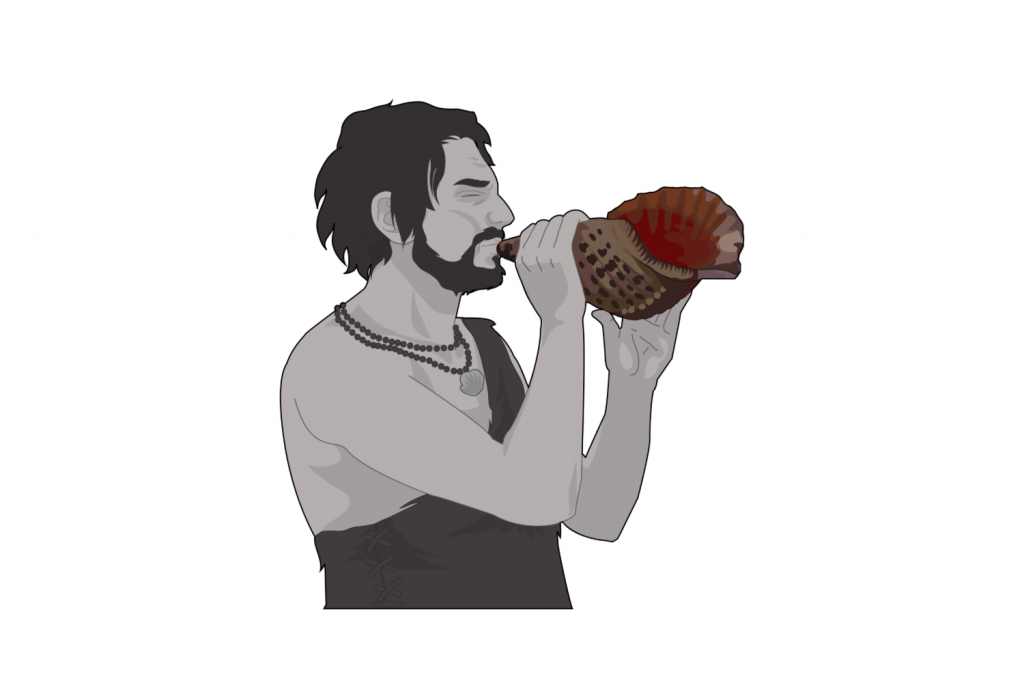
String instruments
- Double bass
- Violin
Plucked string instrument
- Bandurria
- Contra: a 5-string instrument tuned a quarter lower than the timple (typical Canarian guitar) and very similar to it, only much smaller. It is something between the guitar and the timple and is very similar to the Venezuelan guitar. Often used as an accompaniment in traditional dances because of its metrics.
- Venezuelan guitar: a 4-string instrument in descending order. Its creole origin connects it with the family of old Spanish guitars, like the timple. Their presence in Canarian folklore is modern, due to the return of the "Indians".
- Guitar
- Lute
- Mandoline
- Small guitar (timple): a 5-string instrument that can be defined as a small guitar with a "hump" that is played "strumming". It is sharp, very sonorous and its traditional function is to accompany the parranda (traditional dances). Although its origin is uncertain, it has spread throughout the archipelago (although it is more common in the eastern islands).
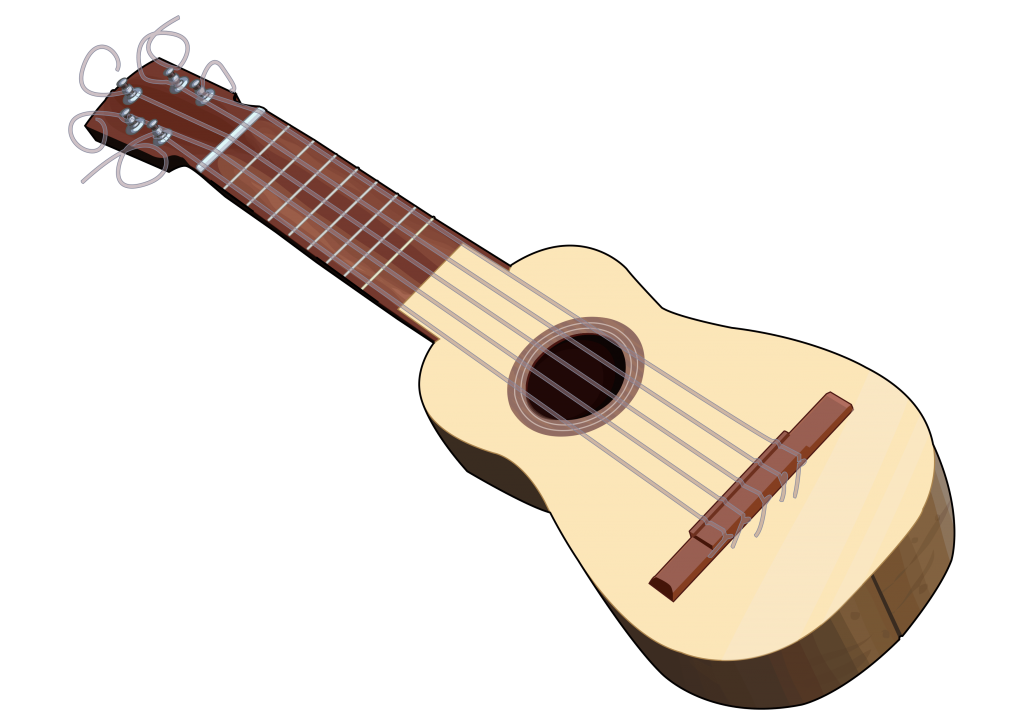
Idiophones
- Clapper: Percussion instrument made of bone or wood, similar to castanets, although it is larger and has a hole inside. The "male" clapper, with a deeper sound, sets the rhythm, and the "female" clapper is the one that rings or beats.
- Castanets
- Huesera (bone instrument): It is widespread in the folklore of the Iberian Peninsula and consists of goat bones fastened with ropes or wires. It is played hanging from the neck and is held by hand at the bottom, while it is rubbed from top to bottom with a castanet. It is widely used in traditional dances throughout the archipelago.
- Clave (two wooden sticks): rhythmic instrument of afrocuban origin, consisting of two cylindrical sticks of solid wood with a diameter of about 2 centimetres at a length of 25 centimetres.
- Espada: elongated metal rods of about one meter in length, similar to a sabre. They are beaten with another thin and small metal rod or stick.
- Lapa (the shell of limpets): an instrument of indigenous origin that normally reproduces the rhythm of the timple. It consists of two more or less similar limpets, the shell of which is held back to back with one hand and beaten with the palm of the other. With the free fingers different rhythms can be played.
- Tambourine
- Tambor
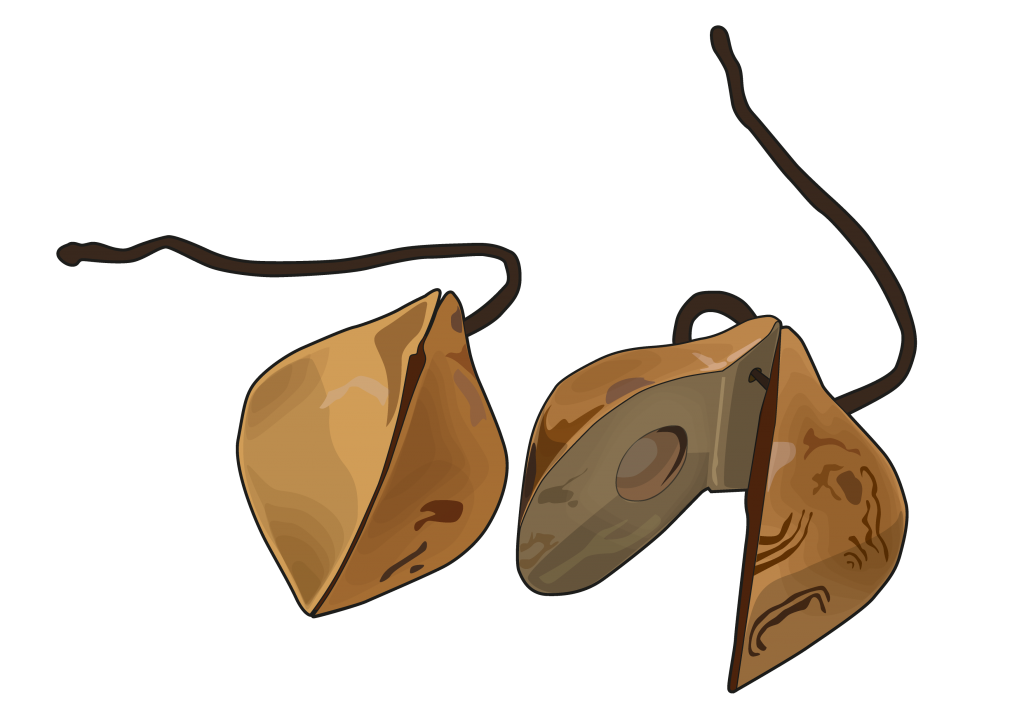
Singing
Canarian music would not be the same if the different songs of the archipelago were left out.
- Arrorró: melodious and slow lullaby, which is characterised by its monotony and varies according to the island. Its lyrics consist of eight-syllable quartets and are sung without repeating the verses.
- Endechas: Poetic compositions of Jewish origin, in which a pitiful feeling is expressed. They are characterised by the feeling that the writer expresses in a lament like sadness, love... They can be divided into three categories according to their structure:
- Endechas in sad monorhythms (composed of three verses with the same rhyme and usually two-syllable verses).
- Endechas in monorhythmic verses (made up of two verses with the same characteristics as the previous ones).
- Endechas in six syllable quartets.
- Seguidillas: a folk song of seven-syllables and five-syllables verses, performed alternately by two singers, each of whom repeats the last verse sung by the other.
Canarian Dances
There is no doubt that the environment determines the life of the villages and shapes their artistic and musical performances. It is therefore not unusual for the Canary Islands to have a great wealth and variety of music. Its contrasting landscapes have given rise to various folk dances.
Isa
A dance that is danced freely because of its joy and beauty. It used to be a dance with a choreography similar to the jota (Spanish dance), in which one had to jump, whereby skill and rhythm were required, since the castanets were played simultaneously. Now, as the result of a series of transformations, the Isa is characterised by its aesthetics, as the group forms a series of roles, bridges, chains and figures.
Folía
Another dance of Canarian music is danced very sensitively with courtly forms. It follows the old tradition of the change of partners by the woman, who returns with her original dance partner after a series of steps. The folías canarias are danced in groups of single and independent couples. It is not allowed to go to the dance floor before the musicians indicate this, so that the couples can go into a dance position.
So there is a musical introduction, the man takes a step forward and bows down in front of the woman who at first rejects him while dancing, taking one step backwards and another to the side. Then follows a change of partner. When the man steps back the woman steps forward as if to reconcile and so on but without touching each other.
Malagueña
Dance in a collective of five, six or more couples in which they form circles, figures, tunnels and braids as in the Isa, accompanied by calm music. The choreography consists of the couples forming a choral constellation with the man on the left opposite in front of the woman and both standing with their backs to the other couples.
They begin by dancing in the same place for several beats, and when half a turn is indicated, the men on the outside of the choir and the women on the inside turn around to dance another series of bars with the opposite couple.
The Canarian folk music and its groups
There are many groups of Canarian folk music that have taken it from the island to a different level, giving it its own personality over time and taking on the characteristics of the Canarian people. This has resulted in a style that is much more varied than the original.
Los Sabandeños
A band of Canarian folk music coming from Tenerife and possibly one of the biggest representatives of the traditional music of the Archipelago with almost 70 records and a valuable sound archive including parts of the island’s legacy and own songs.
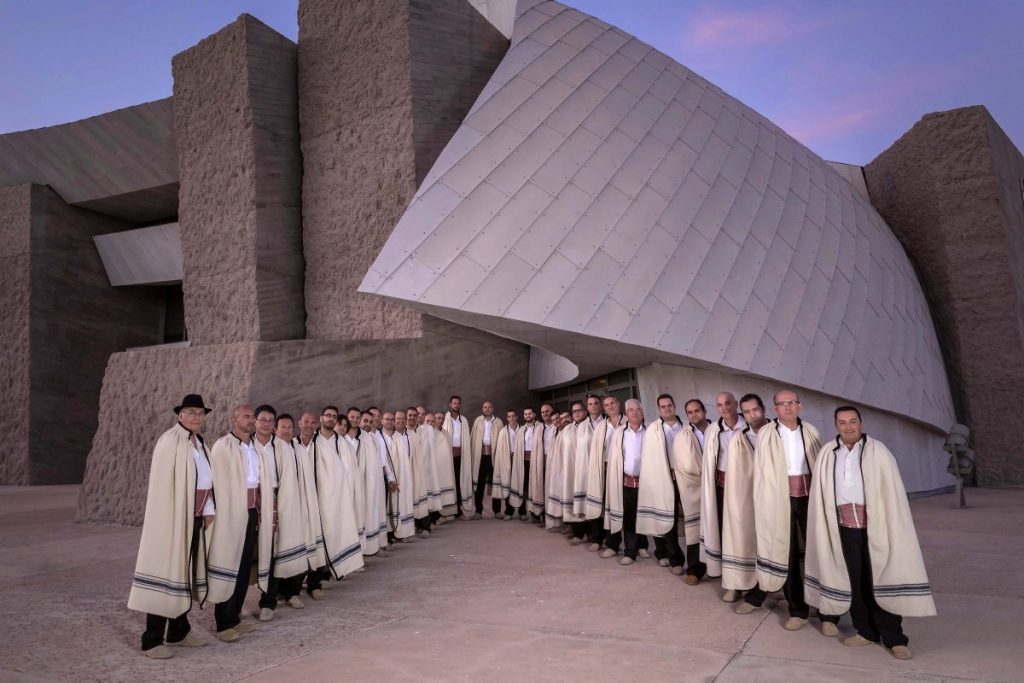
Los Gofiones
Another Canarian folk music group which was born on Gran Canaria and which consists of almost 40 singers and instrumentals with a great discography and important recognitions. Their work in the folk roots is combined with the search of new forms of music and stage. The way of travel through different countries and the link that connects the archipelago with Latin America helped to expand their repertoire with music from other places.
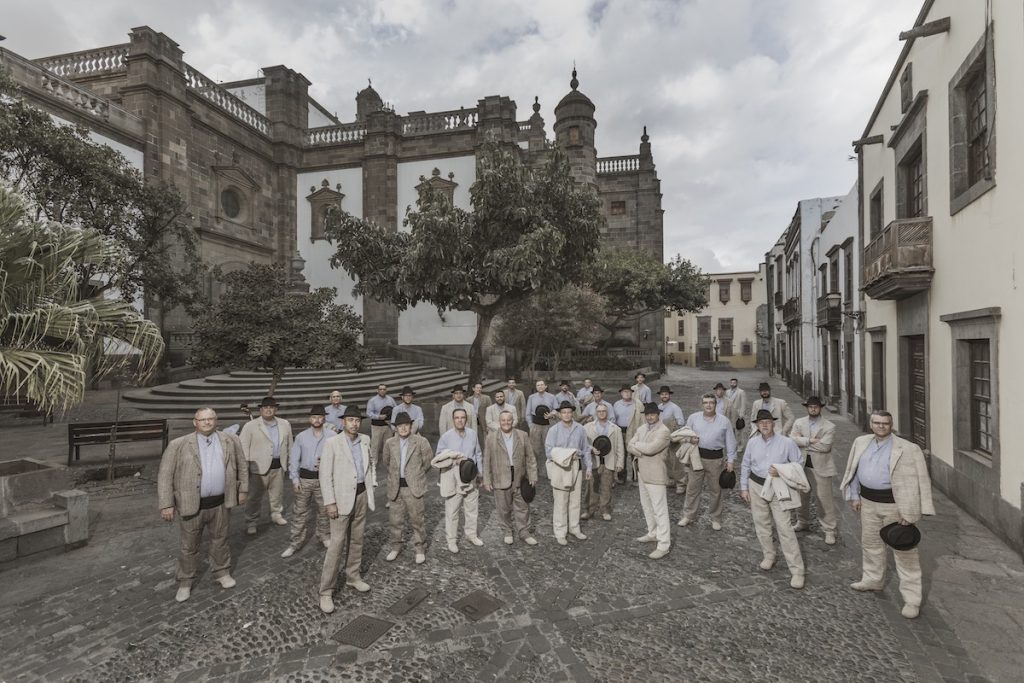
In conclusion, we can say that the Canarian music is an engine which creates relations and which connects people in different moments of their life. The result is a variety of cultural, European and American influences that have enriched the Canary Islands’ musical culture with their history without forgetting the rhythm of the indigenous people.
Source: Government of the Canary Islands
